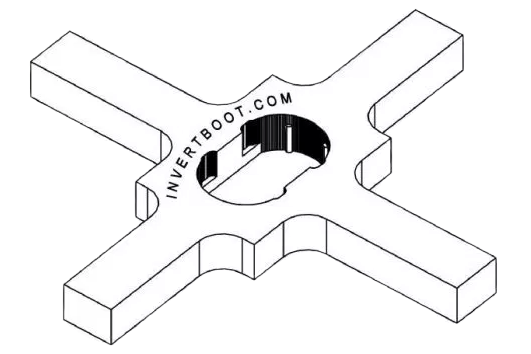

The InvertBoot solves the age-old surveyor’s issue of recording the invert ona culvert or drain without the need to angle your surveying rod.
Don’t let your rod get crooked.
Why Choose Us?
In the Field, an existing drainage or the need for ditch relief on a road segment. usually dictates culvert location. The allowable headwater depth (AWD) is the maximum depth of ponded water upstream of the culvert inlet measured vertically from the invert and controls hydraulic design. AWD may be determined by the depth of fill over the culvert, which is dictated by local topography, roadway geometry, and standards. Frequently, a headwater (HW) to culvert diameter (D) ratio is specified, such as HW/D = 1, which places the allowable headwater elevation at the inlet crown of the culvert.The choice of pipe material, shape, and size may be fixed by economics, availability, site conditions (fill, bedrock, bedload), and fish passage concerns (Gribben 1997).Site parameters important in the design of culverts include the length and slope of the culvert alignment, allowable headwater, fill depth, and effects on inlet geometry. Fill depth is determined by design loads, local topography, roadway geometry, and standards.